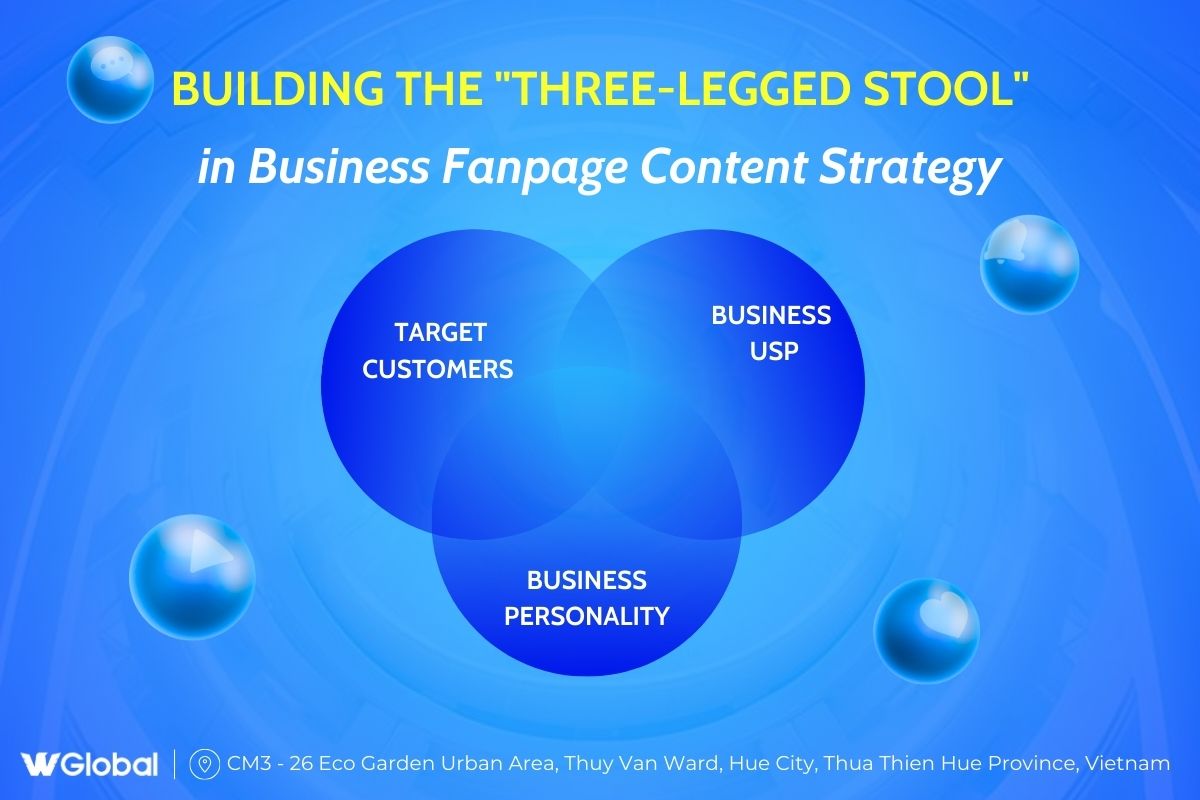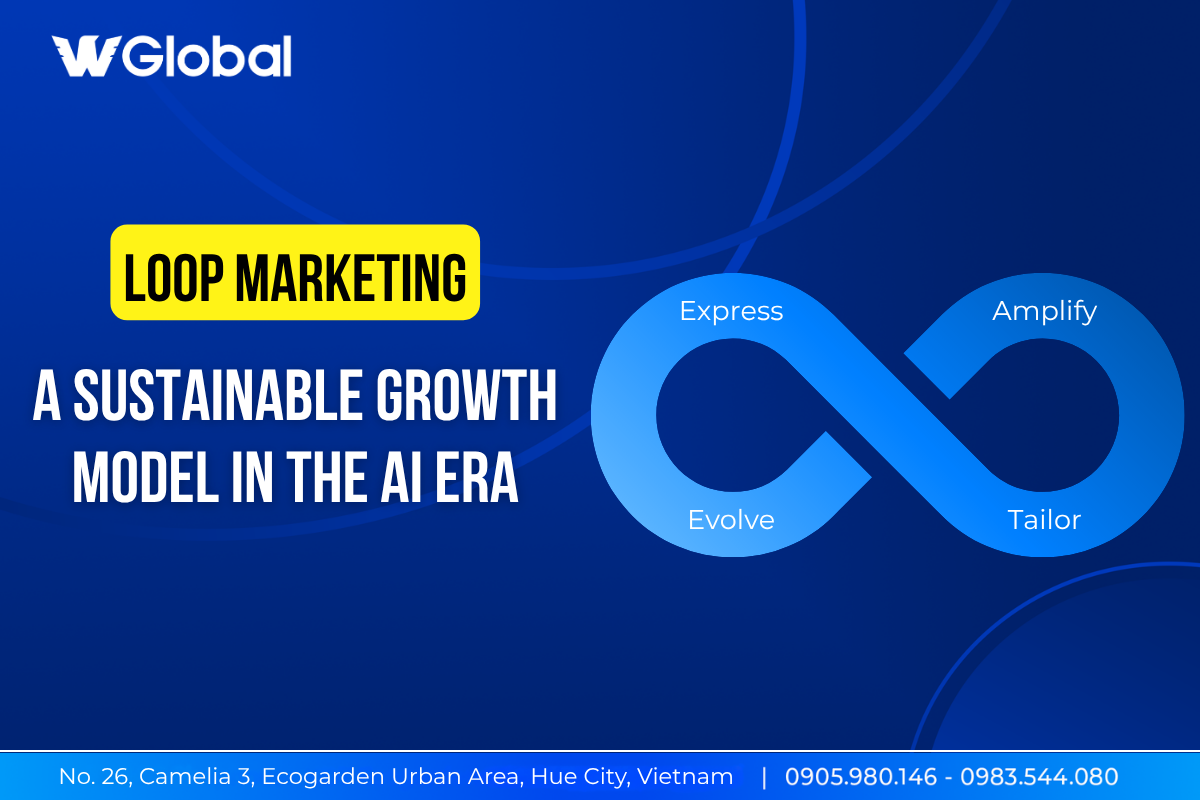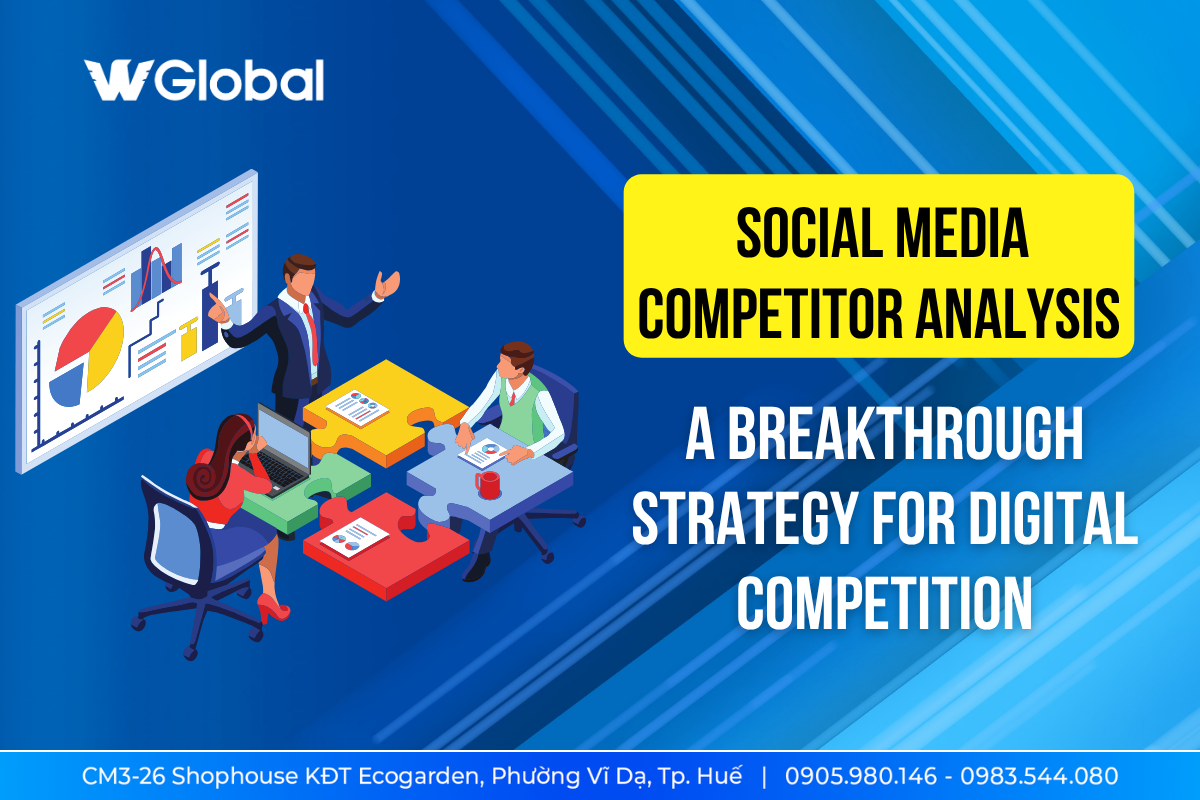Building the “Three-Legged Stool” in Business Fanpage Content Strategy

Have you ever wondered about the secrets behind the strong appeal of renowned brands? It’s the brand strategy—the determinant factor in a business’s success or failure. Brand strategy is not just an aspect for business development; it’s the soul of interaction between the business and customers. Don’t let your business become bland amid the competitive crowd. Incorporate the “Three-Legged Stool” into your brand strategy, so your brand not only exists but also stands out in the minds of customers. Let’s explore the power of this strategy together.
Why is content strategy crucial for businesses?
Today, content strategy is the rhythmic heartbeat of every brand strategy. The crucial part is that it’s not just a way to attract attention, but also a powerful tool to build and strengthen connections with customers. Content is not just about selling products; it’s how you share expertise and sensitivity to issues that interest the audience. Just as the “Three-Legged Stool” keeps the brand balanced, content strategy creates a balance between information and real value. You are not just a seller but a guide and value provider.

Importantly, content should not become an annoying advertisement or purely a negotiation. For a content strategy to be successful, it must genuinely benefit the customer. When you convey value, you build trust. When you share knowledge, you become a reliable source.
Additionally, with a clear content strategy, the business will have a broader overview.
Strategic Objectives
- Each post on the fanpage is not just random content but part of a larger strategy. Creating early bird sign-ups, product launch simulation images, or production process videos all aim for a specific goal. We select these contents to better understand the needs and desires of customers, while expanding the email list and increasing curiosity.
Target Audience
- Content strategy not only answers the question ‘Why’ but also asks ‘Who’. By creating profiles for each target group and building fictional characters, we focus on creating strong connections with customers. Understanding their journey from awareness, consideration to decision helps the content meet their needs and moods.
Effectiveness Measurement
- Content strategy does not stop at posting content without knowing the results. Monitoring social media interactions, early bird sign-ups, and evaluating the actual impact of the content are essential steps. Without measurement, you won’t know if your strategy is successful or not.
“Three-Legged Stool” in Business Fanpage Content Strategy
Digging deep to highlight your business’s Unique Selling Proposition (USP)
Over 96% of consumers don’t want to change their consumption habits unless there’s a real solution to their problems or difficulties. You need to delve into understanding the difficulties, issues, or pain points that your product/service can solve. When you understand this, you can easily build a communication message that customers can relate to.

USP is the soul of differentiation for your content strategy. Answer three main questions:
- What problem does your product/service solve?
- What is your USP, the unique selling point compared to competitors?
- In the competitive market, does your product/service have outstanding differentiating points?
Exploring and leveraging these unique points helps create a fanpage with a unique perception, attracting the attention of target customers.
However, not every product is perfect. The important thing is to understand the weaknesses or disadvantages of your product/service. This helps you prepare and face challenges honestly. At the same time, when you convey this on the fanpage, you create sincerity and trust from customers.
The brand fanpage is not just a place to promote products/services but also a place to build emotions and relationships with customers. Delving into USP not only helps you stand out on the fanpage but also builds trust and loyalty from customers.
Clearly Identifying Potential Customer Profiles
Understanding customers is not just a task; it’s a complex puzzle that demands patience and in-depth analysis to discover the portrait of potential customers. To succeed, we need to look beyond common interests and behaviors, implicitly understand and grasp what customers don’t explicitly express.
Creating content for a fanpage without insights into customers is like “exploring one path, treating one wound.” To attract and satisfy customers amidst the constant flow of information on the newsfeed, content must resonate with the readers’ psychology.
Approach 1: Empathy Map
The Empathy Map is a powerful tool, acting as a magnifying glass to delve into what customers truly desire. You need to step into their shoes and understand their thoughts, emotions, sounds, images, and things they say and do. This helps you understand their pain points and how they want to resolve them.
Approach 2: 5W1H – Who, What, When, Where, Why, How
Using 5W1H, answer crucial questions:
- Who: Identify the target audience with factors such as age, gender, and income.
- What: Describe the products/services you provide.
- When: Determine when they use your products/services.
- Where: Identify where they usually appear online.
- Why: Understand why they use your products/services.
- How: Deployment strategy and related costs.
By doing this, you will paint a detailed portrait of the target customer, helping the fanpage content not only attract but also create a deep connection with the audience. Utilize these tools to take your fanpage to new heights, where customer insights are not just a task but a constant source of motivation for creativity and development.

Shaping the Brand Voice
According to Brian Boland, Facebook has up to 1500 stories that can appear in each user’s Newsfeed, and this number can go up to 15,000 stories for those with many friends and page likes. In the increasingly dense sea of stories, shaping the brand voice becomes more critical than ever.
Brand Voice: The Key to Unlocking the Business Soul
Shaping the brand voice is not just a way to send a message; it’s also a way to connect emotionally with customers in the chaotic online world. This helps customers recognize the personality traits and unique essence of the business amid thousands of choices.
Consistency: The Golden Rule of Brand Voice
Brand voice needs to be consistent and powerful across all channels, from online to offline. This consistency helps create a profound impression and build intimate relationships with customers. It also helps the business stand out among the flood of simultaneous messages.
Uniqueness and Non-Copying: The Key to Standing Out
Choose a unique, distinctive brand voice, and avoid copying from other brands. This helps the business stand out and maintain uniqueness in creative thinking.

Connecting with the Right Audience: Contributing to Building Connections
Brand voice needs to be directed towards the target audience. Only when it connects well with them does it become a common language, creating a practical and intimate corner.
Examples: Coca-Cola and Mailchimp
- Coca-Cola: Positive, approachable, realistic.
- Mailchimp: Clear, authentic, humorous.
Shaping the brand voice is like finding the “sound” of the business in the ocean of 1500 stories. Let your brand voice be unique, powerful, and consistent to stand out in the large quantity and to be remembered by customers.
Above are all the useful content about brand strategy that WGlobal Agency wants to share with you. Any business should implement this to determine a specific direction for the future and leave a lasting impression on users.









